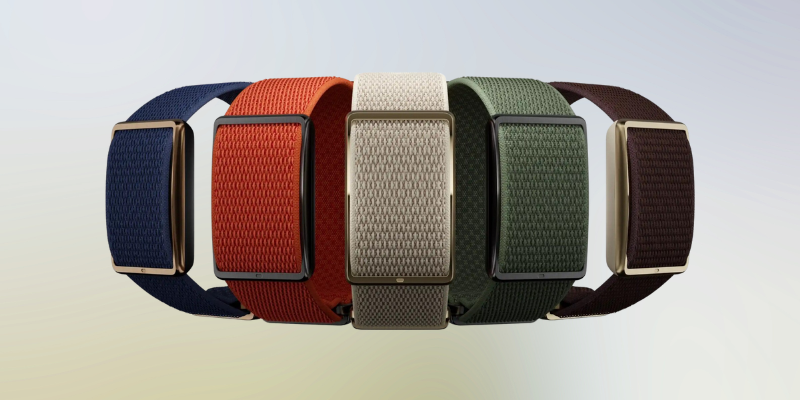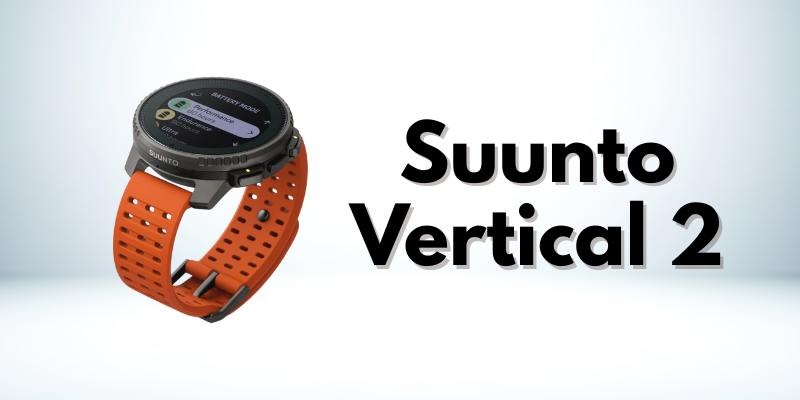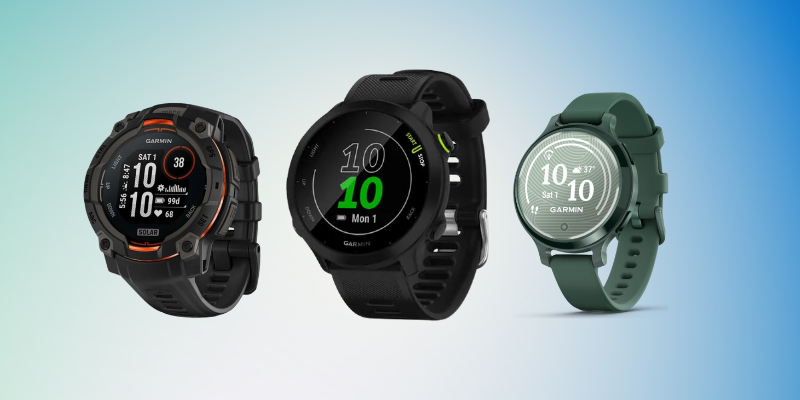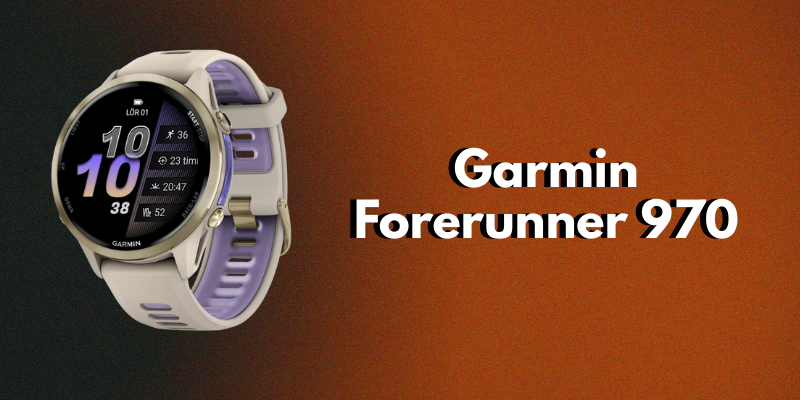What Is Polar Loop? A Fitness Tracker Guide

What is Polar Loop?
Polar Loop is a screen-free, subscription-free wearable health band that tracks activity, sleep, heart rate, and movement continuously on a 24/7 basis. Unlike other screen-free, discreet fitness trackers that require monthly fees, Polar Loop is available for a one-time payment with all features accessible from day one. The device represents Polar's first dedicated screenless wearable designed for distraction-free fitness tracking, allowing users to monitor their health metrics without being pulled out of the moment.
The fitness tracker comes equipped with Polar's Precision Prime optical heart rate technology, providing accurate monitoring capabilities while maintaining a discreet profile. This advanced sensor system enables comprehensive tracking of sleep stages, recovery metrics, and daily activity levels without interrupting the wearer with notifications or alerts. Battery life extends to approximately eight days of continuous use, with internal memory capable of storing up to four weeks of data.
Designed for versatility and comfort, the Polar Loop features a soft textile band paired with a slim buckle available in three colour options: Greige Sand, Night Black, and Brown Copper. The interchangeable bands allow users to switch styles quickly, with additional wristband colours including orange, blue, beige, green, and brown. This design approach makes the Polar Loop suitable for various occasions, even when worn alongside a traditional watch.
→ If you’re looking for Polar straps and accessories, no matter which smartwatch or fitness tracker you have, you should check out our selection.
Unlike screen-based competitors, the Polar Loop operates quietly in the background, collecting data that automatically synchronises with the free Polar Flow mobile application. Through this companion app, users can view detailed breakdowns of their:
- Sleep quality and duration, including sleep stages (REM, light, and deep sleep)
- Recovery status through Nightly Recharge measurements
- Daily activity metrics, including steps and active moments
- Training sessions and workout data
The Polar Loop offers multiple ways to record training sessions. Users can initiate workouts through the Flow app or take advantage of the automatic training detection feature that recognises and records exercise sessions without requiring manual input. For activities to be automatically recorded, they must last at least 10 minutes and meet specific heart rate and intensity requirements.
Notably, Polar emphasises data privacy and protection. As a European-developed device, all user information is safeguarded under EU regulations. Data remains within the Polar ecosystem, is never sold to third parties, and can be viewed, exported, or permanently deleted by the user at any time.
At its core, the Polar Loop aims to promote "everyday momentum" - encouraging small, consistent actions that contribute to long-term health improvements without overwhelming users with excessive data or notifications. This philosophy of quiet tracking differentiates it from many competing products, positioning the Polar Loop as a fitness companion that blends into daily life rather than demanding attention.
How does the Polar Loop fitness tracker work?
The Polar Loop fitness tracker operates through a sophisticated combination of sensors and algorithms that continuously monitor physiological and movement data. At the core of its functionality is the advanced Precision Prime optical heart rate technology that accurately measures heart rate patterns throughout the day and night. This sensor works in conjunction with built-in accelerometers to detect movement patterns, allowing the device to track steps, distance, calories burned, and active time without any user intervention.
For activity tracking, the Polar Loop continuously monitors movement and heart rate data to provide comprehensive insights. The device applies a correction algorithm to heart rate data every 90 seconds, ensuring optimal accuracy even during various activities. This constant monitoring enables the tracker to detect periods of inactivity and, through the Flow app, provide inactivity alerts when you've been sedentary for too long.
Training session recording with the Polar Loop offers three flexible options to suit different preferences and activities:
- Automatic Training Detection (ATD) – The device automatically begins recording when it detects elevated heart rate and activity levels without requiring any manual input. For a session to be automatically recorded, it must last at least 10 minutes and reach specific intensity thresholds: heart rate must exceed 50% of your Heart Rate Reserve to begin tracking, and activity level must reach 6.0 METs or higher.
- Manual recording with the Flow app (tracked on device) – Users can start and stop the session using the app but don't need to carry their phone during the workout. In this mode, primarily heart rate data is recorded, making it ideal for activities where carrying a phone is inconvenient.
- Recording with the Polar Flow app – This option keeps the phone connected throughout the session to add GPS-based data including speed, distance, and route information. Both heart rate and location data are recorded, enabling real-time monitoring during the activity.
After completing a training session, the Polar Loop automatically synchronises with the Flow app when your phone is within Bluetooth range. Alternatively, you can manually initiate synchronisation through the app. Once synced, the session appears in the Diary and Calendar views of the Flow app, where you can access detailed training analysis.
The training summary provides comprehensive information based on the sport profile and collected data. This includes session duration, heart rate metrics (average, minimum, maximum), calories burned, and, if GPS data is available, speed and distance information. Additionally, the summary offers training benefit feedback based on heart rate zone distribution and Training Load Pro metrics that show your cardiovascular response to the session.
For sleep tracking, the Polar Loop monitors heart rate variability and movement patterns to identify sleep stages (REM, light, and deep sleep). This data feeds into the Nightly Recharge feature that assesses overnight recovery status, providing insights into how well your body has recuperated from daily demands.
Throughout all activities, the Polar Loop maintains a background presence, collecting data discreetly without interrupting the user's experience. This philosophy of quiet tracking allows the device to blend seamlessly into daily routines while providing valuable health and fitness insights whenever users choose to check their progress.
Key features of the Polar Loop activity tracker
The Polar Loop fitness tracker boasts a comprehensive suite of features that extend beyond basic activity tracking. Equipped with advanced Precision Prime technology, this device delivers accurate data across multiple health dimensions simultaneously.
Activity and step tracking
The Polar Loop continuously monitors daily movements through its 24/7 activity tracking system. This feature records steps, distance, calories burned, and active time throughout the day. Beyond mere counting, the system provides activity benefit insights that demonstrate how everyday movement contributes to overall fitness improvements.
For motivation, the tracker incorporates personalised daily activity goals tailored to individual lifestyle patterns. Furthermore, when prolonged sedentary periods are detected, the system sends inactivity alerts through the companion app, encouraging regular movement. The energy expenditure tracking calculates calories burned both during specific sessions and throughout the day, offering a complete picture of daily energy output.
Sleep and recovery monitoring
Sleep monitoring capabilities of the Polar Loop extend well beyond basic sleep duration metrics. The Sleep Plus Stages feature analyzes sleep patterns by identifying and tracking light, deep, and REM sleep phases. This detailed breakdown helps users understand their sleep quality more comprehensively.
The Nightly Recharge feature measures overnight recovery status, providing insights into how effectively the body recuperates from daily stressors. Complementing this, the SleepWise function predicts daytime alertness based on sleep and autonomic nervous system status, helping users optimise their day. Additionally, the Sleep Gate feature suggests optimal sleep times to maximise rest quality.
Heart rate and training load
Heart rate monitoring stands as a core capability of the Polar Loop, with continuous tracking throughout both day and night via the Precision Prime sensor. The system records real-time, average, and maximum heart rates during activities, as well as resting heart rate and PPI-based heart rate variability during sleep.
The Training Load Pro feature measures cardiovascular strain from exercise sessions. This system calculates Cardio Load based on training impulse (TRIMP), a scientifically validated method for quantifying training intensity. The tracker analyses both short-term strain (7-day average) and long-term tolerance (28-day average) to evaluate training status. Through this analysis, users receive feedback on whether their current training patterns are productive, maintaining, or potentially leading to overreaching.
App integration with Polar Flow
The Polar Flow app serves as the data visualisation hub for the Polar Loop, automatically syncing when the device is within Bluetooth range. Through this interface, users can access an instant visual interpretation of their training and activity data.
The app's diary view consolidates training, activity, and sleep metrics in a single interface that can be customised to display preferred data points. For training sessions, the Polar Loop offers three flexible tracking options:
- Automatic Training Detection for effortless monitoring of workouts meeting minimum duration and intensity requirements
- Manual start via the Flow app with tracking on the device
- Full app integration with GPS-based metrics for comprehensive session analysis
With over 170 sport profiles available through Polar Flow, users can customise their tracking experience for specific activities. Moreover, the app enables fitness level assessment through dedicated testing protocols that monitor progress over time.
Polar Loop vs other fitness trackers
When comparing fitness tracking options, the Polar Loop distinguishes itself through several key differences from its competitors across various categories.
Polar Loop vs Whoop
The most significant contrast between Polar Loop and Whoop lies in their payment structures. Polar Loop requires a one-time payment with no additional fees, whilst Whoop operates on an annual subscription model. This subscription-free approach makes the Polar Loop immediately appealing for budget-conscious users.
Despite similar appearances, the devices differ substantially in functionality. Whoop captures data at a higher sampling rate (26Hz) compared to Polar Loop's Generation 3.5 sensor technology. Correspondingly, Whoop provides more comprehensive metrics including blood oxygen and skin temperature data, which are absent or inaccessible in the Polar Loop.
→ We also have a large collection of Whoop replacement bands, if you’re already a user.
A crucial difference emerges in automatic activity detection. Whilst both trackers attempt to record workouts automatically, Whoop demonstrates superior accuracy in identifying specific exercise types. Polar Loop primarily identifies general activity rather than specific workout categories, often missing indoor cycling sessions that Whoop consistently captures.
Polar Loop vs Garmin wearables
The Polar Loop serves as a complementary device rather than a direct competitor to Garmin's comprehensive sports watches. Users already owning Polar sports watches can employ the Loop to "fill in the downtime between training sessions". This synergistic approach provides a more holistic view of health metrics.
Battery performance presents another distinction, with the Polar Loop offering approximately eight days of use versus longer durations typical of many Garmin trackers. However, the Polar Loop excels in heart rate accuracy measurements compared to some Garmin alternatives.
For fitness enthusiasts seeking detailed training analysis, the fundamental difference is that Polar Loop lacks GPS functionality and sports watch-style exercise tracking. This positions it differently from Garmin's approach, which typically integrates these features directly into its wearables.
Polar Loop vs smartwatches
The most obvious distinction between the Polar Loop and smartwatches is the complete absence of a screen or display. This design philosophy creates a "wear and forget" experience that contrasts sharply with notification-heavy smartwatch interfaces.
Primarily, the Polar Loop operates as a data collection device rather than an interactive platform. This positions it for users seeking distraction-free fitness tracking without sacrificing their traditional timepieces, as the Loop's slim profile allows it to "share space with a traditional watch".
Significantly, the Polar Loop lacks typical smartwatch features such as alarms, notifications, and on-device controls. Instead, it focuses exclusively on health metrics without the additional functionality that characterises most smartwatches.
The future of Polar Loop and app improvements
Polar has unveiled an extensive roadmap for significant upgrades to the Flow ecosystem, which will substantially enhance the Polar Loop user experience. The company acknowledges that while the Loop hardware offers strong capabilities, the current Flow app requires improvement. Subsequently, a comprehensive three-phase overhaul is currently underway.
The initial phase has focused on backend infrastructure changes, strengthening compliance with EU privacy laws. Following these foundational improvements, Phase 2 will introduce visible user interface enhancements with Android users receiving updates first, followed by iOS. This intermediate update will feature a redesigned Flow Diary and improved data visualisation.
Phase 3 represents the most substantial transformation, completely reimagining the Flow experience. This stage will introduce a modular card system for metrics like sleep recharge, weekly distance, and personal bests. The redesign emphasises deeper personalization with a configurable user interface and more immersive visuals.
For Polar Loop users specifically, forthcoming updates will address activity detection accuracy - a capability Polar recognises as essential. These improvements aim to enhance automatic workout identification and classification, creating a truly "wear and forget" experience. The app will also prioritise recovery metrics and heart rate variability data, bringing these formerly buried measurements to the forefront.
Henceforth, the success of Polar Loop will significantly depend on these Flow app improvements, especially as competitors like Whoop differentiate themselves primarily through software capabilities.









Leave a comment